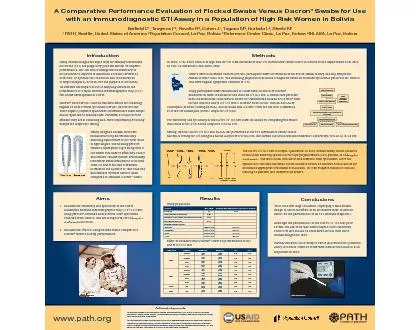PDF-A Comparative Performance Evaluation of Flocked Swabs Versus Dacron Sw
Author : cheryl-pisano | Published Date : 2016-12-16
Tinajeros F Revollo R Trigoso M Hurtado L Steele MPATH Seattle United States of America Population Council La Paz Bolivia Reference Center Clinic La Paz Bolivia
Presentation Embed Code
Download Presentation
Download Presentation The PPT/PDF document "A Comparative Performance Evaluation of ..." is the property of its rightful owner. Permission is granted to download and print the materials on this website for personal, non-commercial use only, and to display it on your personal computer provided you do not modify the materials and that you retain all copyright notices contained in the materials. By downloading content from our website, you accept the terms of this agreement.
A Comparative Performance Evaluation of Flocked Swabs Versus Dacron Sw: Transcript
Download Rules Of Document
"A Comparative Performance Evaluation of Flocked Swabs Versus Dacron Sw"The content belongs to its owner. You may download and print it for personal use, without modification, and keep all copyright notices. By downloading, you agree to these terms.
Related Documents














